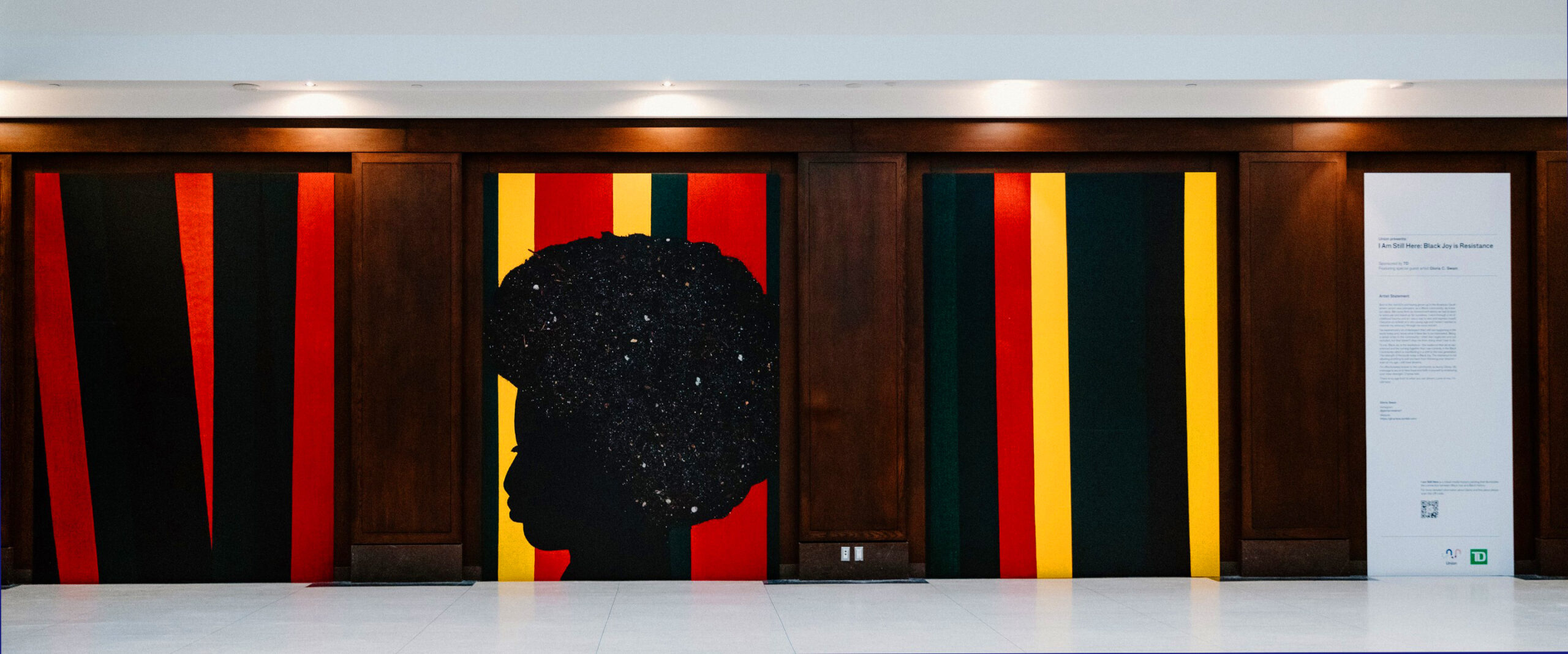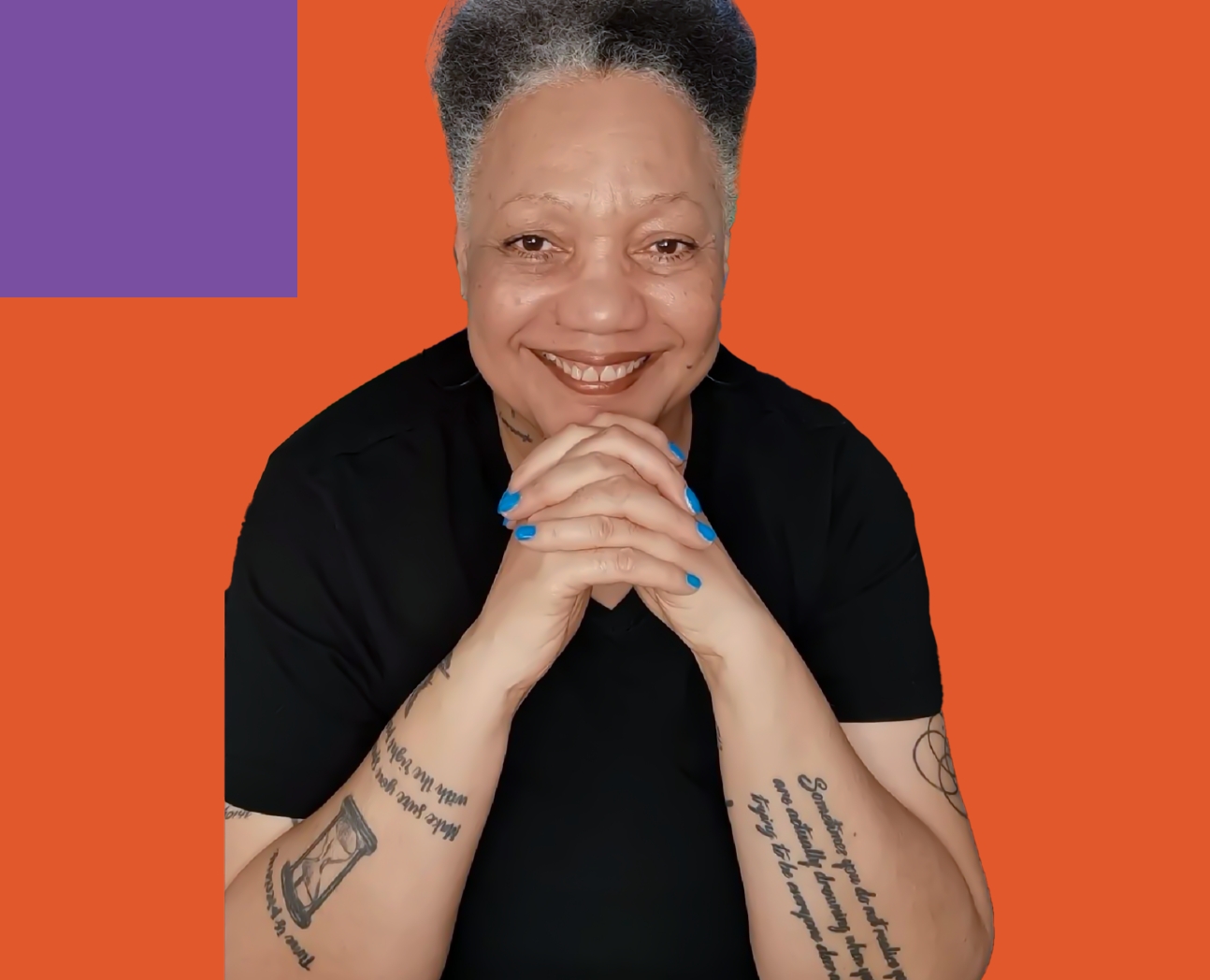



I became an activist at a very young age and I knew I wanted to be an artist and channel my advocacy through my voice and art. I went through a lot of childhood trauma and art was a way to deal and express myself.
I’ve experienced a lot that I still see happening in world today, and I know what it feels like to be mistreated and disrespected. Being a senior artist in the community, I often have felt neglected and not included. That doesn’t stop me from doing what I love to do.
To me, Black Joy is the resistance – the resilience that we’ve experienced and the coming together that I see in the Black Community. Although many issues persist, this continued resilience is manifesting in a shift in the new generation. The strength of the youth today is Black Joy.
The Resistance is not allowing anyone or situation to pull you back from following your dreams. Even at my age, I still have dreams. It’s about hope and faith in yourself and embracing your inner strength. I say always “Choose love”. I’m affectionately known in the community as Aunty Gloria.
My message to you is that there is no age limit to what you can dream. Look at me, I’m still here.
Gloria Swain—
This piece is a mixed-media triptych painting using acrylic paint, spray paint and soil on canvas boards to illuminate the connection between Black hair and Black history. Using soil for the hair symbolizes the connection to the land where our ancestors were stolen and the land they were forced to labour for free and lose their lives fighting for freedom and against racism and inequality.
Black hair is unique. It has various textures, deep cultural and historical roots and is/was believed to have spiritual powers passed on for generations. The roots of our hair contain our DNA.
In Ancient Africa, hair styles illustrated where you were from and who you were. Braids were used to signify age, marital status, wealth, social status, and religion.
During the era of African enslavement, Black women worn their hair beneath cloth to hide their tangled hair because they no longer had herbs and oils to take care of their hair. Enslaved women and girls were forced to cover their hair because slave owners feared they would hide weapons in their hair, and it was believed covering hair made them more presentable.
Women used bacon grease and butter to take care of their hair. Butter knives were heated, and harmful chemicals was used to straighten coily hair because it was seen as unattractive.
The texture of slaves’ hair, along with skin colour, determined value and working conditions.
Braids and cornrows were used as maps when escaping to freedom and to carry seeds as food after escaping.
Slave traders shaved captured women’s heads to dehumanize them and erase their identity and culture. When I see Black women shave their own heads, today, I see the beauty, strength, and the reclaiming of the power to re-define what society has told us how we should look.
Black hair connects us to our history, culture, identities, and our stories. Bias against Black hair continues to exist. Natural hair is a symbol of empowerment, resistance, social justice activism, and Black joy.

Gloria C Swain, she/her, is a Toronto based multi-disciplinary artist, curator, and writer whose art practice includes abstract paintings, performance, social justice, and photography.
Gloria’s practice centers around storytelling and advocating for awareness of anti-Black racism, violence against women and Trans people, mental health, and ageism.
She got her start as an artist at a young age, using art as a form of self-expression and a coping mechanism. She uses textured and layered abstract paintings to challenge the ongoing colonial violence and to eradicate all forms of oppression.
At age sixty, she returned to university. By age sixty-two, she had received a master’s degree. In 2019, age 63, she debuted her very first solo abstract geometric exhibition. She is 2022 Senior Pride Ambassador, member of Inaugural Regional Council on Aging, and past member of Economic Development & Culture Committee, City of Toronto and PRIDE Toronto Senior Pride Committee.
She is a recipient of the York University Robert J. Tiffin Student Leadership Award, Canadian International Black Women’s 100 Black Women to Watch award and was Tangled Art & Disability 2016 Artist in Residence. She has received various art grants, including Toronto Arts Council, Ontario Arts Council, Art Gallery of Ontario, and Canada Council for the Arts.
She holds a certificate in Community Arts Practice and a degree in Environmental Studies from York University. Her work has shown in Toronto, Manitoba, Montreal, New York and Kingston, Ontario. Her writings have been published in Cultivate Feminism, Marvellous Grounds, the Canadian Journal of Disability Studies, Shades of Noir Journals and CBC Arts. Her works have been commissioned by Pride Toronto office and as part of The Wedge Collection, Toronto.
Gloria continues to use her art and social media platforms as an opportunity to create spaces for older women artists and support initiatives and programs that unite, inspire, and support youth, Black women, and elders.